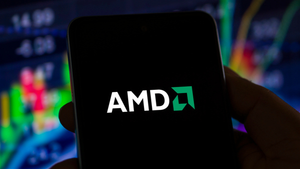Financial News
The IPO Market Roars Back: A Surge in New Listings Signals Renewed Investor Confidence

The year 2025 has heralded a dramatic resurgence in the Initial Public Offering (IPO) market, with a significant uptick in new listings and capital raised. This robust rebound signals a renewed, albeit cautious, investor confidence after a period of volatility and muted activity in previous years. As companies flock to public markets, the sheer volume and value of these offerings are set to surpass totals from 2022 and 2023, painting an optimistic picture for businesses seeking growth capital and for investors hunting for new opportunities. This invigorated environment suggests a broader economic recovery and a market increasingly willing to embrace innovative, high-growth ventures.
The surge is not merely a quantitative increase but also a qualitative shift, with many new public companies demonstrating strong post-IPO performance. This positive momentum has injected a fresh wave of enthusiasm into the financial markets, suggesting that after years of holding back, the IPO window is now wide open.
A Flood of Fresh Listings and Billions in Capital: What Happened and Why It Matters
The year 2025 has seen a significant and sustained surge in the IPO market, particularly in the United States and parts of Asia, marking a strong comeback after a period of relative dormancy. As of August 29, 2025, the U.S. market alone has witnessed 229 IPOs, an impressive 86.18% increase compared to the same period in 2024. For offerings with a market capitalization of $50 million or more, there have been 142 priced IPOs, a 57.8% jump. Globally, the first half of 2025 saw approximately 539-611 IPO deals, with total proceeds soaring by 16-17% year-over-year to between $58.2 billion and $62.02 billion. The U.S. led this global activity with 109 IPOs in the first half, its strongest performance since the 2021 peak, raising over $26.25 billion in equity issuance. A notable driver of this activity has been Special Purpose Acquisition Companies (SPACs), which accounted for 41 of the 59 U.S. IPOs in Q2 2025.
This remarkable rebound is underpinned by several key factors. Stabilized inflation, anticipated declines in interest rates, and strong equity valuations have created a more predictable and attractive environment for companies contemplating a public debut. Furthermore, a substantial backlog of companies, particularly those backed by private equity and venture capital, has been patiently awaiting favorable market conditions to execute their exit strategies. The positive aftermarket performance of many newly public companies, with an average return of 20% for 2025 IPOs (double that of the Morningstar US Market Index), has further fueled investor appetite and signaled that the market is ready to "dream big" again.
Key players facilitating this surge include major investment banks such as Goldman Sachs Group Inc. (NYSE: GS), JPMorgan Chase & Co. (NYSE: JPM), Citigroup Inc. (NYSE: C), and UBS Group AG (NYSE: UBS), who are directly benefiting from increased underwriting and advisory fees. These banks play crucial roles in valuation, marketing, and ensuring regulatory compliance. Venture capital firms like Accel, Sequoia Capital, and Andreessen Horowitz (a16z) are also central, guiding their portfolio companies to successful exits and reinvesting returns into new ventures.
Notable companies leading the charge include CoreWeave (Nasdaq: CRWV), an AI cloud platform that became the largest tech IPO since 2021, surging 250% on its listing day. Digital banking provider Chime Financial (Nasdaq: CHYM) saw its shares jump 59% on debut, while cryptocurrency firm Circle Internet Group (NYSE: CRCL) recorded an astounding 750% increase in its share price shortly after its IPO. Other successful listings include design software developer Figma (NYSE: FIG) and low-power chip maker Ambiq Micro, Inc. Highly anticipated IPOs for the remainder of 2025 include fintech giant Stripe (estimated valuation $65-91.5 billion), AI-driven data analytics company Databricks ($43-62 billion), and India's Reliance Jio ($120 billion), indicating that the pipeline remains robust and high-profile.
High Rollers and Hard Knocks: The Winners and Losers of the IPO Boom
The revitalized IPO market of 2025 is creating a clear stratification of winners and losers, reshaping fortunes across various company types, investor classes, and industry sectors. The prevailing sentiment favors companies with strong fundamentals, clear growth trajectories, and a demonstrable path to profitability.
The Winners:
At the forefront of the winning camp are high-growth innovators, particularly those leveraging cutting-edge technologies like Artificial Intelligence, cloud computing, cybersecurity, and blockchain. Companies with robust business models, sustained earnings, and significant revenue growth, focusing on long-term secular trends, are proving irresistible to investors. CoreWeave (Nasdaq: CRWV), for instance, a leader in AI cloud infrastructure, exemplifies this trend, with its shares more than doubling since its April IPO. Similarly, fintech innovators like Chime Financial (Nasdaq: CHYM) and Circle Internet Group (NYSE: CRCL) have seen their market capitalizations soar, benefiting from investor enthusiasm for digital financial services and clearer regulatory frameworks for digital assets.
Private Equity (PE) and Venture Capital (VC) firms are among the biggest beneficiaries. After holding onto aging portfolio companies through leaner years, the improved market conditions offer a golden opportunity for these early-stage investors to exit at favorable valuations, returning substantial liquidity to their limited partners. VC-backed firms, in particular, are witnessing impressive post-IPO surges, significantly outperforming private equity-backed listings. Institutional investors are actively deploying capital into these new offerings, especially in high-growth sectors, driving strong demand.
From a sectoral perspective, Technology, Media, & Telecommunications (TMT) is leading the charge, with AI infrastructure, cloud computing, and cybersecurity companies dominating. The Life Sciences/Healthcare sector is also having a strong year, while the Industrial, Manufacturing & Engineering (IME) sector is gaining traction due to deregulation and economic reshoring efforts. The Energy sector, attracting foreign direct investment, and the Consumer sector, particularly in regions like Hong Kong, are also performing well.
The Losers (or those facing challenges):
Conversely, companies without a clear path to profitability within the next 12 to 18 months are struggling to attract investor interest in this more disciplined market. Overvalued companies whose "hype exceeds fundamentals" risk underperforming post-listing, similar to the cautionary tales from previous years. Companies in highly competitive markets with undifferentiated offerings, struggling with customer acquisition and retention, may also see their market caps decline post-IPO, as seen with some established players facing challenges from newer, specialized competitors.
While overall investor confidence is up, retail investors chasing hype without thorough due diligence face significant risks. These investors are vulnerable to volatility, potential overvaluation, and price drops after the expiration of lock-up periods. Investments tied to geopolitically sensitive sectors or regions also face increased uncertainty and potential underperformance.
In terms of sectors, while life sciences generally show promise, some specific sub-sectors within Pharmaceuticals, Biotech, and Digital Health have faced significant challenges, recording lower average transaction sizes and reduced total proceeds. The London Stock Exchange, for example, has experienced liquidity struggles, leading companies like crypto firm Bitpanda to opt for more robust markets in New York or Frankfurt. Sectors heavily exposed to fluctuating trade policies and potential tariffs can face instability, impacting supply chains, costs, and investor confidence. The market's renewed focus on profitability means that pre-profit companies find it harder to secure funding through IPOs, a stark contrast to the more speculative IPO environment of a few years prior.
Industry Tides and Broader Implications
The 2025 IPO surge is more than just a financial event; it's a barometer for broader industry trends, signaling a significant shift in the economic landscape. This resurgence fits squarely into a narrative of global economic recovery, driven by declining inflation and stabilizing interest rates, fostering an environment of renewed optimism and capital availability. The Dow Jones Industrial Average breaking past 40,000 points earlier in the year underscored this positive momentum.
One of the most profound ripple effects is the intensification of product market competition. Newly public companies gain access to substantial capital, allowing them to expand capacity, enhance offerings, and aggressively pursue market share. Research suggests that competitors in the same industry may experience negative stock price reactions and a deterioration in operating performance post-IPO, primarily due to the newly capitalized firm's improved ability to compete. This can lead to increased customer churn and a long-term drop in profits for rivals. Conversely, partners of newly public firms, such as technology providers or service vendors, might benefit from increased business opportunities and enhanced visibility. Investment banks themselves are witnessing a boom, with aggressive recruitment and significant revenue growth, signaling a vibrant market environment.
The venture capital (VC) ecosystem experiences a critical period of liquidity. IPOs are the primary exit strategy for many VC investments, providing substantial returns that can be reinvested into new ventures, thus fueling a continuous cycle of innovation. Successful IPOs bolster a VC firm's ability to raise new funds from Limited Partners (LPs). However, a "hot" IPO market, especially one flush with VC funding, can sometimes lead to a paradox: the most promising startups may choose to stay private longer due due to attractive private valuations, potentially leading to lower quality companies going public. This shift is notable in 2025, as public investors prioritize sustainability over speculative growth, emphasizing stricter financial expectations.
Regulatory and policy implications are also at play. The IPO surge inevitably attracts heightened scrutiny from regulatory bodies like the Securities and Exchange Commission (SEC). New IPO regulations in 2025 are expected to bring enhanced disclosure requirements regarding financial health, governance, and risks. The rise of alternative listing mechanisms such as direct listings and SPACs, while offering flexibility, may also prompt new guidelines to ensure investor protection and responsible use. Historically, periods of intense IPO activity have often led to a reevaluation of market safeguards to prevent excesses, drawing parallels to the Dot-Com Bubble of the late 1990s, where speculative enthusiasm for unproven tech companies led to significant investor losses when the bubble burst. This historical context underscores the market's current emphasis on strong fundamentals and clear profitability, a lesson learned from past cycles. The 2020-2021 surge, characterized by a SPAC boom, was similarly followed by a steep decline, reinforcing the need for prudence.
The Road Ahead: What Comes Next
The 2025 IPO surge signals a dynamic period for financial markets, with both short-term momentum and long-term implications. The immediate future (H2 2025 into 2026) looks promising for continued IPO activity, driven by sustained market stability, further anticipated interest rate reductions, and a robust pipeline of private companies eager to go public. The strong performance of recent IPOs is creating a virtuous cycle, encouraging more firms to test the waters. Sectors like AI, life sciences, and industrials are expected to maintain their leadership, attracting significant investor capital. However, geopolitical tensions, trade policies, and persistent inflation remain potential headwinds that could introduce volatility and cause temporary pauses in listing plans.
In the long term, the market is expected to settle into a more normalized, yet robust, pace compared to the frenetic 2021 boom. The "private for longer" trend, where companies stay private longer to mature, will likely persist, meaning that future IPOs will often involve larger, more established firms with clearer paths to profitability. This shift emphasizes a market that values fundamentals and sustainable growth over speculative potential. Companies will need to demonstrate strong earnings, positive cash flows, and adaptability to evolving industry narratives. This transition from private to public capital provides crucial funding for new investments and growth, but also brings increased scrutiny and pressure for consistent quarterly performance.
Strategically, companies considering an IPO are pivoting to prioritize profitability and scalability, ensuring they are well-positioned for higher valuations. Many are also exploring diverse global financial centers for their listings, including New York, London, and Hong Kong, to tap into broader investor pools. For investors and underwriters, the focus on meticulous due diligence is paramount, moving beyond initial price surges to evaluate long-term value creation.
Emerging markets are set to play an increasingly significant role. India, with its projected ~7% economic growth and strong retail investor participation, is poised for a record-breaking IPO year in 2025 across fintech, EV, healthcare, and renewable energy. Greater China, including Hong Kong, is also seeing a dramatic increase in its share of global IPO proceeds. However, regions like Africa continue to lag. Geopolitical instability and the "private for longer" trend (particularly in Europe) present ongoing challenges. Various scenarios could unfold: a positive scenario (most likely if current trends hold) involves a sustained global rebound driven by cooperative trade frameworks and accommodative monetary policy; a moderate/volatile scenario entails intermittent surges and slowdowns due to economic uncertainties; and a downturn scenario could result from renewed high inflation or significant global instability.
A New Era for Public Markets: The Conclusion
The 2025 IPO market surge unequivocally marks a new era for public markets, signifying a powerful reactivation after a period of cautious sentiment. The key takeaway is a renewed, albeit discerning, investor confidence, underpinning a substantial increase in both the volume of new listings and the capital raised. This vibrant activity highlights the market's capacity to absorb new entrants, particularly those in high-growth sectors such as AI-driven technology, life sciences, and industrials. Global hotspots like the U.S., India, and Greater China are leading this resurgence, driven by strong economic fundamentals and a backlog of private equity and venture capital-backed companies seeking opportune exits.
Moving forward, the market is poised for continued, yet more tempered, growth. The emphasis has clearly shifted from speculative ventures to companies with robust fundamentals, clear growth strategies, and a defined path to profitability. This disciplined approach suggests a healthier, more sustainable IPO environment compared to past booms. However, the market's trajectory remains inextricably linked to macroeconomic factors, including interest rate policies, inflation, and global geopolitical stability.
For investors, the present environment offers exciting opportunities, but also necessitates a strategic and informed approach. While the initial "pop" on listing day can be enticing, the long-term success of an investment hinges on thorough due diligence—researching a company's financials, business model, competitive landscape, and management team. Diversification across sectors and geographies, particularly considering the robust activity in emerging markets, will be crucial. Keeping a vigilant eye on macro trends and understanding the motivations behind sponsor-backed IPOs will also prove invaluable. The 2025 IPO surge is not merely a fleeting moment of exuberance; it's a testament to the market's resilience and its enduring role as a vital conduit for capital formation and wealth creation. Investors who combine enthusiasm with prudence are best positioned to navigate and profit from this new era in public markets.
More News
View More




Recent Quotes
View More
Quotes delayed at least 20 minutes.
By accessing this page, you agree to the Privacy Policy and Terms Of Service.



